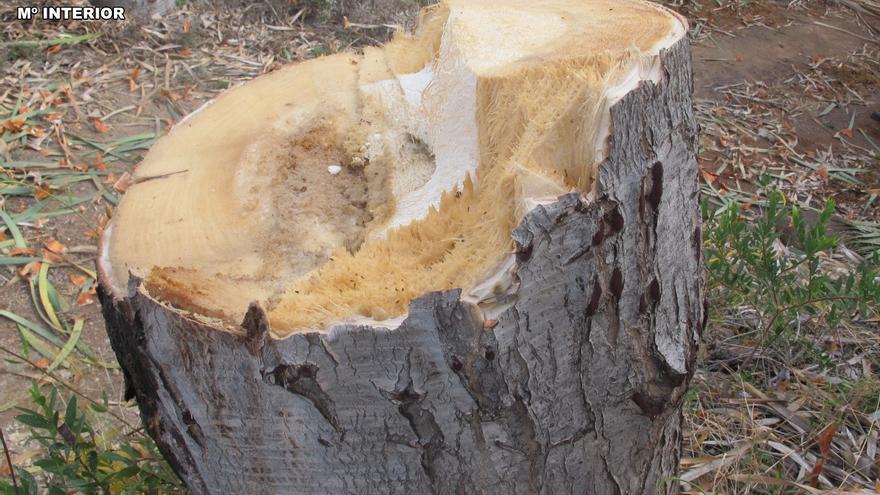Illegal destruction of protected dragon tree in Gáldar
On June 17, the Guardia Civil’s Nature Protection Service responded to a disturbing incident in La Vega, Gáldar municipality (Las Palmas), after receiving reports of serious damage to the island’s natural heritage. What they discovered near a local hermitage was the tragic destruction of one of the Canary Islands’ most iconic species.
The discovery at La Vega
At the site, authorities found the trunk of a Dracaena draco specimen, commonly known as the Canarian Dragon Tree, with plant remains scattered throughout the area. Fragments of the trunk and leaves belonging to the same specimen painted a clear picture of deliberate destruction. Although investigators couldn’t determine the exact height due to missing parts, evidence suggested the dragon tree had reached approximately four meters in height plus its crown, with a base diameter of about 60 centimeters and an estimated age of 50 years.
The tree was located on rustic land classified under intensive agricultural protection (S.R.P.P.A.I-5), making its destruction even more significant from a conservation standpoint.
Investigation reveals family heritage lost
The investigation led authorities to the property owner, who learned about the incident through social media. The owner emphasized the dragon tree’s importance to both the farm and his family, expressing bewilderment about why someone would fell the tree, especially since it wasn’t preventing any agricultural activities in its location.
Further investigation revealed that the farm had been leased approximately thirteen years ago to an individual who became the primary suspect. When contacted, this person claimed to have no authorization to cut down the dragon tree, yet evidence pointed to their involvement in the destruction.
Legal protection of Canarian dragon trees
The Dracaena draco holds significant legal protection under multiple regulations, making this destruction particularly serious. The species is listed in Spain’s Catalogue of Threatened Species (Royal Decree 139/2011) under the “special interest” category and in the Canary Islands Catalogue of Protected Species (Law 4/2010) as a species requiring special protection. Additionally, it’s included in Annex IV of the EU Habitats Directive (92/43/EEC), which explicitly prohibits its destruction.
For visitors to the Canary Islands, these dragon trees represent living symbols of the archipelago’s unique biodiversity. Their protection reflects the islands’ commitment to preserving natural heritage that has evolved over millennia in this Atlantic paradise.
Criminal charges filed
The unauthorized destruction occurred with full knowledge of the tree’s existence and location, resulting in the irreversible loss of a mature dragon tree in excellent conservation condition. Given the severity of destroying a protected species specimen, authorities have filed charges under Article 334 of the current Penal Code.
The suspect faces investigation for an alleged offense under Title XVI of the Penal Code, which addresses crimes related to territorial planning, urban development, historical heritage protection, and environmental protection. Specifically, the charges fall under Chapter IV, dealing with offenses against flora and fauna. The case has been transferred to the Duty Court of Santa María de Guía for judicial proceedings.

